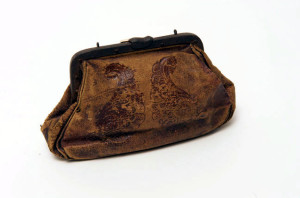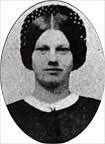By Gene Pisasale, Special to UnionvilleTimes.com
The 150th Anniversary of the start of the Civil War was recognized around the nation this past April, with hundreds of communities sharing lectures, speeches, artifacts and even some remembrances from those whose ancestors participated in the historic conflict. The Battle of Gettysburg, fought from July 1st- 3rd, 1863 was a turning point in that war. Roughly 160,000 soldiers from Union and Confederate regiments gathered in the small crossroads town and participated in one of the seminal events in American history. Brutal fighting in places with colorful names like the Devil’s Den, Little Round Top and the Peach Orchard would in subsequent years be material for hundreds of books whose authors tried to decipher the reasons for the bloody conflict- and the many ways in which it changed America.
The small town of Chadds Ford holds an important artifact from this important battle. A tiny change purse sits in a case at the Christian C. Sanderson Museum on Creek Road, not far from the historic Brandywine River, where another great battle occurred in the Revolutionary War nearly 86 years earlier. The purse rests quietly among the many Civil War artifacts displayed nearby- several bullets, a shred of the bandage wrapped around Lincoln’s head and a piece of the gallows from which John Brown was hung- but it links us in a very personal way to one of the most tragic events of that battle. The purse belonged to Jennie Wade, the only civilian killed during the Battle of Gettysburg.
Jennie Wade was 20 years old in July 1863 and a supporter of the Union cause, baking bread and distributing it to Union soldiers as they swept into the town on the first day of the battle. Although Jennie lived blocks away on Breckenridge Street, she decided to move her family to the center of town into her sister’s brick house on Baltimore Street, which she felt would be a safer place to stay. After spending much of the day on Wednesday, July 1st making bread for the soldiers, she planned to do more to help the troops. On Thursday, July 2nd, she and her sister prepared another batch and left it to rise overnight. On the morning of Friday, July 3rd, Jennie stood in the kitchen kneading dough, her purse in the pocket of her dress, when a Confederate sharpshooter’s bullet pierced the wooden door and hit her in the back, killing her on the spot.
Chris Sanderson was an avid collector of Americana, gathering thousands of artifacts during his 84 years of life from people and places around the country and around the world. He met Jennie Wade’s sister, Georgia Wade McClellan in Gettysburg in 1913 on the 50th Anniversary of the battle. Having correspondence with her, she later sent him Jennie’s purse as a remembrance of the conflict. Chris treasured the purse, as he did most everything in his massive collection, but this one item holds a special place in the hearts and minds of people who have studied this tumultuous event. There were nearly 600,000 casualties from this war, with fathers fighting sons, brother against brother and families torn apart forever. The South would slowly rise again, but only after many decades of effort to rebuild and move away from its blistering past. Memories of the Civil War- a strange name for a conflict which was so devastating – remain with us in simple things, items which people used to live their lives in peace, despite the maelstrom raging around them. Jennie Wade’s purse is one of those items and it is worth seeing. It lies, waiting quietly on a shelf in a small cabinet at the Christian Sanderson Museum in Chadds Ford.
Visit the Sanderson Museum – A Man’s Life, A Nation’s History at 1755 Creek Road (old Route 100) in Chadds Ford, PA just north of Route 1 or on-line at www.SandersonMuseum.org. For information on the author of this article, visit www.GenePisasale.com.
Editor’s note: this is the first of what will be a regular series of articles about a single item and what it tells us about our local history, courtesy of our friends at the Sanderson Museum.








